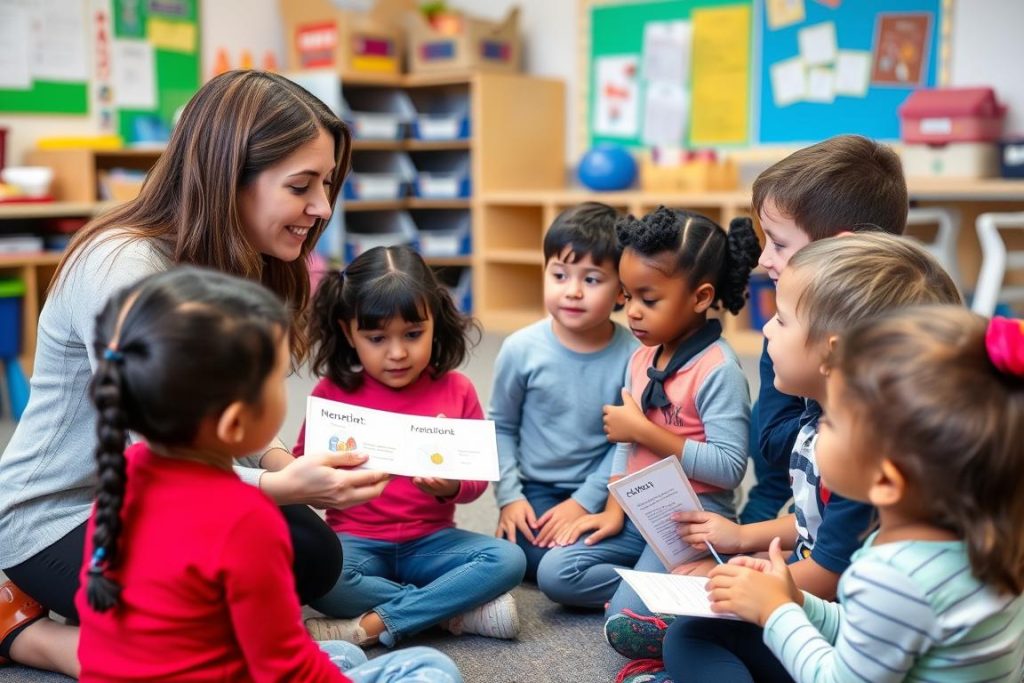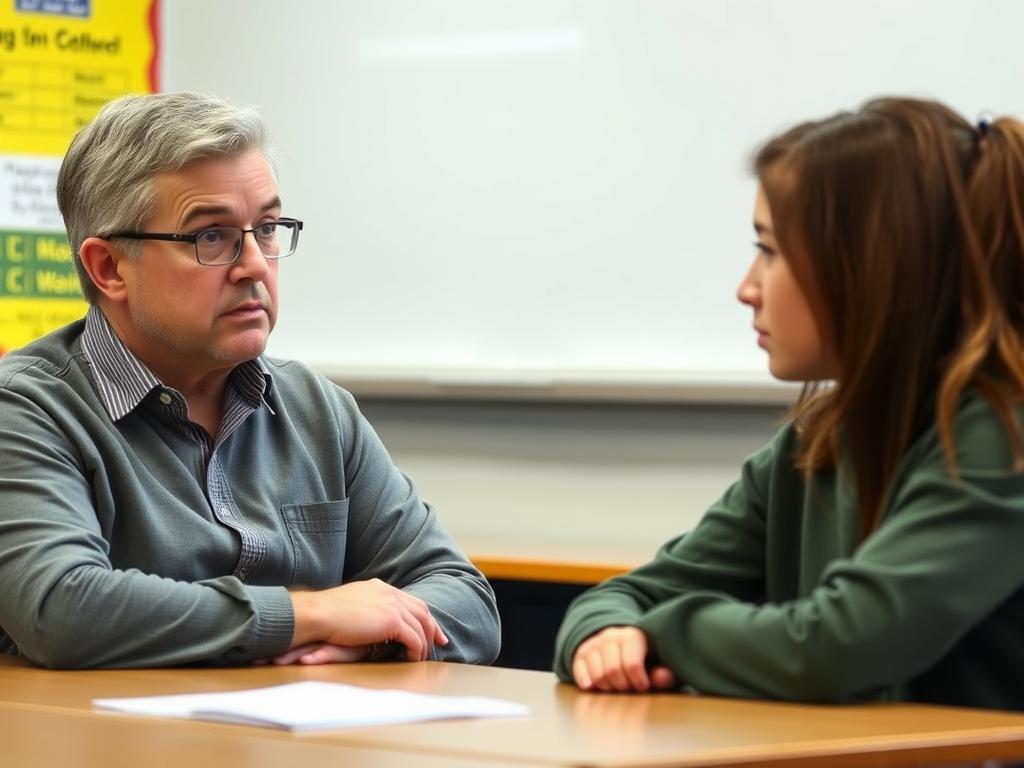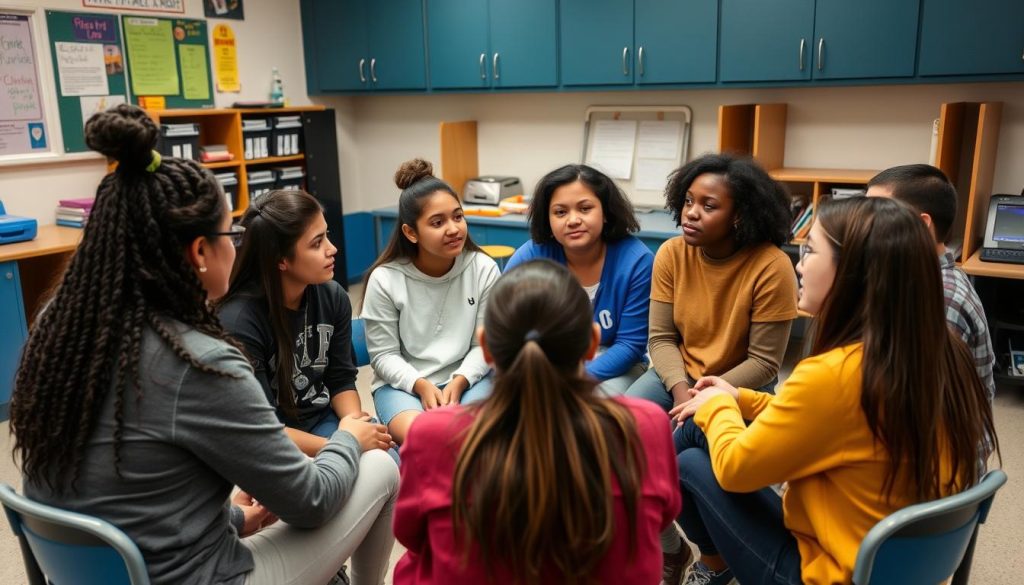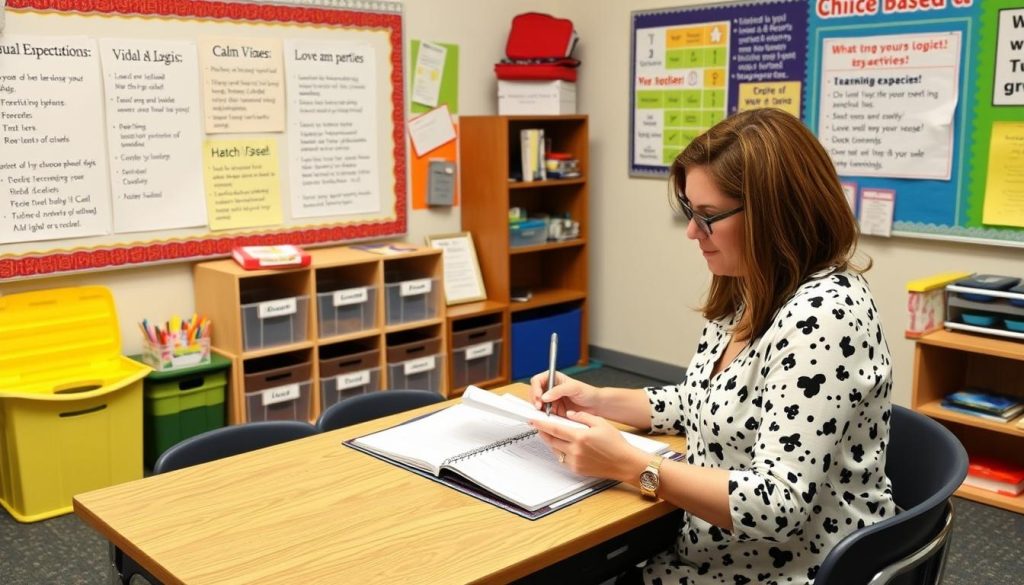Understanding Love and Logic Effective Strategies
Love and Logic is an approach to classroom management and parenting developed by Jim Fay and Foster W. Cline, MD. At its core, the philosophy combines warmth and empathy (“love”) with natural consequences and firm boundaries (“logic”). This balanced approach helps children develop responsibility, problem-solving abilities, and emotional regulation—all critical life skills.
For K12 teachers, implementing Love and Logic Effective Strategies means shifting from traditional disciplinary methods to a more relationship-centered approach. According to research published in the Journal of Early Childhood Teacher Education, teachers who employ empathy-based discipline strategies report higher student engagement and fewer behavioral disruptions.
The Love and Logic approach enhances teacher skills by providing practical tools for managing classroom behavior without resorting to anger, threats, or repeated warnings. Instead, teachers learn to set firm boundaries with empathy, allowing natural consequences to do the teaching while maintaining positive relationships with students.
Enhance Your Teacher Skills with Love and Logic
Discover how Love and Logic can transform your classroom management approach and earn professional development credits at the same time.
Effective Strategies #1: Neutralize Arguing with One-Liners
One of the most valuable teacher skills is the ability to defuse arguments before they escalate. The Love and Logic approach offers simple yet powerful one-liners that help teachers maintain boundaries without engaging in power struggles.
When students attempt to argue or negotiate, responding with phrases like “I respect you too much to argue” or “I’ll listen when your voice sounds calm like mine” helps maintain your authority while modeling respectful communication. These simple statements acknowledge the student’s feelings while firmly redirecting inappropriate behavior.
The effectiveness of this strategy lies in its consistency. By using the same calm, measured response each time a student attempts to engage you in an argument, you’re teaching an important lesson about appropriate ways to handle disagreement. According to educators who implement these Effective Strategies, one-liners work because they:
- Prevent the escalation of conflicts
- Save valuable instructional time
- Model emotional regulation
- Preserve the dignity of both teacher and student
- Create predictable boundaries
Remember that tone matters as much as the words themselves. Delivering these one-liners with genuine empathy rather than sarcasm or frustration is essential for building trust with your students while developing your teacher skills.
Effective Strategies #2: Provide Choices Within Limits
Offering controlled choices is one of the most powerful teacher skills in the Love and Logic approach. This strategy gives students a sense of control and autonomy while still operating within boundaries you’ve established.

Instead of giving directives that invite resistance (“Open your books to page 45”), frame instructions as choices (“Would you like to open your book now or in 30 seconds?”). Both options lead to the desired outcome, but the approach respects the student’s need for autonomy.
Effective choices share these characteristics:
- Both options are acceptable to you
- Choices are stated clearly and simply
- You’re willing to enforce either option
- The tone is respectful, not threatening
- You allow the student time to decide
This strategy works particularly well with students who tend to resist authority or struggle with transitions. By consistently offering small choices throughout the day, you’re developing essential teacher skills while helping students practice decision-making in a safe environment.
A 2020 study in the Journal of School Psychology found that classrooms where teachers regularly offered controlled choices showed improved student engagement and decreased disruptive behaviors compared to more directive environments.
Effective Strategies #3: Empathy Before Consequences
Perhaps the most fundamental principle of Love and Logic is leading with empathy before delivering consequences. This approach transforms discipline from punishment to a learning opportunity, significantly enhancing your teacher skills in behavior management.

When a student misbehaves, begin your response with genuine empathy: “How sad” or “I can see this is difficult.” This acknowledges their feelings without condoning the behavior. Only after expressing empathy should you deliver the consequence.
The formula is simple but powerful:
Empathy + Consequence = Learning
This approach works because it:
- Preserves the student-teacher relationship
- Reduces defensive reactions
- Helps students focus on their choices rather than your reaction
- Models emotional intelligence
- Creates a safe emotional environment for learning from mistakes
Implementing this strategy requires developing specific teacher skills, including authentic empathy, emotional regulation, and the ability to separate behaviors from the student’s worth as a person. With practice, leading with empathy becomes natural and transforms your approach to classroom management.
Master the Art of Empathetic Discipline
Learn how to balance empathy with accountability and earn professional development credits that advance your career.
Effective Strategies #4: Delay Consequences When Emotions Run High
When classroom situations become emotionally charged, immediate consequences often escalate rather than resolve problems. The Love and Logic approach teaches that delaying consequences until emotions have cooled is one of the most valuable teacher skills you can develop.
Instead of responding immediately to misbehavior with consequences, try saying: “I need some time to think about this. We’ll talk about it later.” This simple statement accomplishes several important goals:
- Gives you time to calm down and think clearly
- Allows the student to reflect on their choices
- Prevents impulsive decisions you might regret
- Creates natural anticipation (which itself can be a consequence)
- Demonstrates thoughtful decision-making
This strategy is particularly effective for serious infractions or situations where you feel your own emotions rising. By delaying the consequence, you’re modeling emotional regulation—an essential teacher skill that students will gradually internalize.
When you do deliver the consequence, you’ll be able to do so with empathy rather than anger, making it more likely that the student will learn from the experience rather than focus on resentment toward you.
Implementation Tip: Be sure to follow through after delaying a consequence. Set a specific time to address the issue privately with the student, and approach the conversation with curiosity about their perspective before delivering the consequence.
Effective Strategies #5: Use Enforceable Statements
Traditional classroom management often relies on unenforceable statements like “Stop talking” or “Pay attention.” Love and Logic teaches that shifting to enforceable statements is one of the most transformative teacher skills you can develop.

Enforceable statements focus on what you will do rather than what you want students to do. They sound like:
- “I teach students who are seated.”
- “I’ll start when the talking stops.”
- “I allow people to use the materials when they’ve shown they can do so responsibly.”
- “I give my attention to students who raise their hands.”
- “I’ll be happy to discuss this when your voice is calm.”
The power of enforceable statements lies in their honesty and clarity. You’re not making threats you can’t follow through on; you’re simply stating what you will do based on students’ choices. This approach:
- Places responsibility for choices with the student
- Eliminates power struggles
- Preserves student dignity
- Creates clear cause-and-effect understanding
- Reduces teacher frustration
Mastering enforceable statements requires practice and reflection—key teacher skills that develop over time. Start by identifying common classroom situations where you tend to make unenforceable statements, then craft alternatives that focus on your actions rather than student behavior.
Effective Strategies #6: Turn Mistakes Into Learning Opportunities
A fundamental principle of Love and Logic is viewing mistakes as valuable learning opportunities rather than failures to be punished. Developing this perspective is one of the most important teacher skills for creating a positive classroom culture.

When students make behavioral or academic mistakes, Love and Logic teachers respond with:
- Genuine curiosity about what happened
- Questions that promote reflection rather than shame
- Empathy for the struggle or confusion
- Guidance toward better choices
- Confidence in the student’s ability to learn and grow
This approach creates a classroom where students feel safe taking intellectual risks and learning from missteps. Rather than fearing failure, they develop resilience and problem-solving skills—outcomes that extend far beyond academic achievement.
Implementing this strategy requires developing specific teacher skills, including:
- Responding to mistakes without judgment or frustration
- Asking reflective questions (“What happened?” “What was your thinking?” “How did that work out?”)
- Guiding students to generate their own solutions
- Maintaining high expectations while providing emotional support
Transform Your Classroom Culture
Learn how to create a classroom where mistakes become stepping stones to success while earning professional development credits.
Effective Strategies #7: Build Relationships Through Shared Thinking
The final Love and Logic strategy focuses on strengthening student-teacher relationships through shared thinking—a process that develops critical teacher skills while fostering student autonomy and problem-solving abilities.

Shared thinking involves guiding students through problem-solving conversations rather than providing immediate solutions. When students face challenges, respond with questions like:
- “What do you think about that?”
- “How might you solve this problem?”
- “What have you tried so far?”
- “What do you think might happen if you tried that?”
- “How would that solution work for everyone involved?”
This approach accomplishes several important goals:
- Demonstrates respect for students’ thinking abilities
- Develops critical thinking and problem-solving skills
- Creates opportunities for meaningful connection
- Reduces student dependence on teacher intervention
- Builds confidence in students’ ability to handle challenges
Mastering shared thinking requires developing specific teacher skills, including effective questioning techniques, active listening, and the patience to allow students to work through problems at their own pace. With practice, this approach becomes a natural part of your teaching style and transforms your relationships with students.
Implementing Love and Logic Effective Strategies in Your Classroom
Successfully integrating Love and Logic approaches into your teaching practice requires intentionality and consistency. Here are practical steps for implementation that will enhance your teacher skills:

Start Small and Build Gradually
Rather than attempting to implement all seven strategies at once, begin with one that addresses your most pressing classroom challenge. Master that approach before adding others. This gradual implementation allows you to develop your teacher skills methodically while giving students time to adjust to new expectations.
Be Consistent
The effectiveness of Love and Logic depends on consistency. When students can predict your responses, they develop greater security and trust in the classroom environment. Inconsistent application undermines your teacher skills and confuses students about expectations.
Practice Self-Reflection
Regularly assess how the strategies are working in your specific context. Consider keeping a journal to track successes and challenges as you develop your teacher skills. Note which approaches work best with different students and situations.
Seek Support
Connect with colleagues who are also implementing Love and Logic or join online communities where you can share experiences and get advice. Professional development specifically focused on these Effective Strategies can significantly enhance your teacher skills and implementation success.
How long does it take to see results with Love and Logic?
Many teachers report seeing positive changes within the first few weeks of consistent implementation. However, significant transformation typically takes 2-3 months as both you and your students adjust to the new approach. The development of teacher skills related to Love and Logic is an ongoing process that continues to deepen over time.
Will these strategies work with all age groups?
Yes, though the specific language and application will vary by age. The core principles of empathy, natural consequences, and shared thinking are effective across K12 settings. Adapting these Effective Strategies for different developmental stages is an important teacher skill that develops with experience.
How do I explain this approach to parents?
Communicating with parents about your classroom management philosophy is an essential teacher skill. Consider sending home a brief explanation of Love and Logic principles at the beginning of the year, emphasizing how these Effective Strategies help students develop responsibility and problem-solving skills. Many parents appreciate understanding the “why” behind your approaches.
Transform Your Classroom with Love and Logic Effective Strategies
Implementing Love and Logic approaches requires commitment and practice, but the results—stronger relationships, increased student responsibility, and a more positive classroom culture—make the effort worthwhile. As you develop these essential teacher skills, you’ll likely find that classroom management becomes less stressful and more rewarding.
Remember that perfection isn’t the goal; progress is. Each time you respond to a challenging situation with empathy before consequences, offer meaningful choices, or guide a student through shared thinking, you’re building both your teacher skills and your students’ capacity for responsible decision-making.
The seven Effective Strategies we’ve explored—neutralizing arguments with one-liners, providing choices within limits, leading with empathy before consequences, delaying consequences when emotions run high, using enforceable statements, turning mistakes into learning opportunities, and building relationships through shared thinking—offer a comprehensive framework for creating a classroom where both love and logic guide your interactions with students.
Ready to Transform Your Teaching Experience?
Take the next step in your professional development journey with comprehensive Love and Logic training that enhances your teacher skills while earning valuable credits.
Explore Teacher Credit Courses
Learn More About Love and Logic




